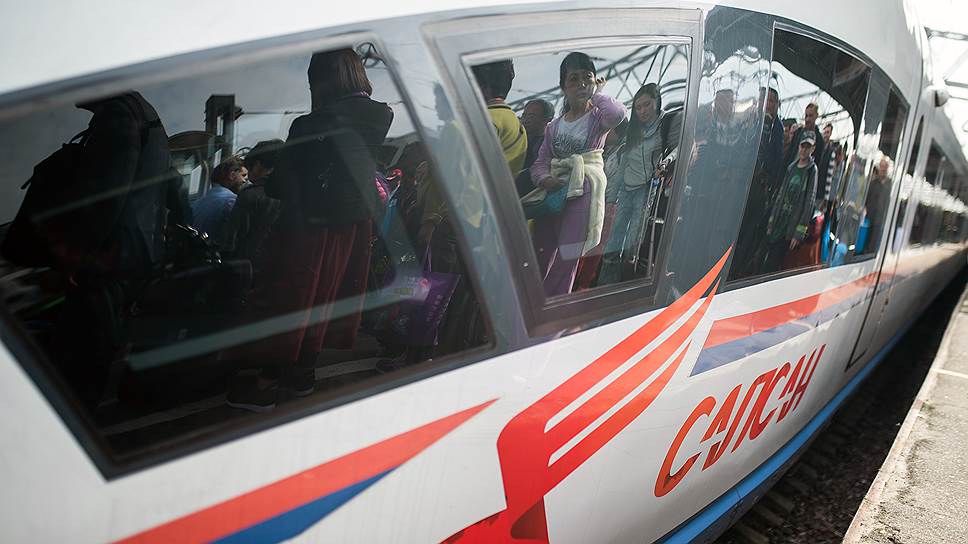Russia's Place on the Global Investment Map
Foreign direct investment in Russia often serves as a "quality mark" Russian companies seeking to raise capital from foreign investors have to compete with their global peers while domestic investors cannot yet provide capital in comparable quantities and on similar conditions.

The international flow of capital, despite some obstacles, is becoming increasingly strong
Фото: РИА Новости
To finance the "investment breakthrough", which the president spoke about in his Address to the Federal Assembly, the current level of investment at 17-18% of GDP is not enough. With weak investment, Russia cannot rank among the five largest global economies, boost industrial exports or implement a digital economy.
The current level of investment allows for depreciation of fixed assets at 45-48% to be maintained, but to increase competitiveness, much more capex is required. Lots of funds are needed to replace legacy fixed assets dating back to the USSR and to adapt the goods and services production structure to meet current needs by closing inefficient production facilities and building new ones. Finally, investment means a stable quality of life for future generations and provides the means to deal with poverty issues, social reforms and fair pension plans.
Three elements are required to achieve the strategic goal of bringing the investment level to the 25% of GDP declared by the country's leaders.
First, efficiency improvements for existing investments ensured by competition: those who invest into less profitable projects lose and the whole economy loses with them.
The second component is the performance of financial markets enabling investors to transform their savings into investments.
And the third one is the need for foreign investments ensuring higher growth than would be possible with just internal sources.
If the first two components, according to expert estimates, can support investment at the level of 21-22% of GDP, the missing 3-4% of investment GDP comes from foreign investors.
Without them the Russia economy will need either to reduce current consumption and, therefore, increase poverty, multiply social issues and experience an outflow of capital, people and technologies, or, at best, keep it unchanged.
There is one main reason why foreigners invest and will continue to invest in Russia. Investing in any country is about a return on committed capital, and compared to a country where the risks are lower, the competition is higher and the possibility of fast growth is limited, returns will be higher.
No sanctions, no geopolitical problems will break this basic principle: until a market economy exists in Russia it will be considered by all global players in terms of profitability. If profitability is acceptable compared to risk, investment will continue.
This not only includes private international capital which mainly considers the current foreign policy conflicts between Russia and the West as an annoying hindrance for investing, increasing the country risk and reducing the profitability of investments.
Russia has also become an appealing investment target for sovereign wealth funds created by the governments of countries with advanced economies or rich resources for the management of surplus profits. The work of sovereign funds almost always requires interaction with local partners to reduce risk. The Russian Direct Investment Fund (RDIF) has become such a local partner for them.
Dozens of transactions performed by RDIF, its expertise in Russian business and its government support, which helps resolve lots of issues, are the main aspects which make it a unique opportunity for foreign investors.
But RDIF is not only a mediator, it is a co-investor of Russian public funds. A very simple model is proposed to sovereign funds: for each dollar of Russian investment by RDIF into the project foreign partners must invest at least one dollar of their funds.
In some cases investment in a project is considered on an individual basis, in other cases it is automatic: the partner invests where RDIF invests with the partner having agreed an established limit.
If the foreign fund loses or wins it does it together with Russia. The partners share all the risks based on the "pari passu" principle.In the last six years the investment machine of RDIF and its partners has invested more than RUB 1.2 trillion. The total volume of fund partnerships is $40B.
The most important aspect in the acquisition of foreign investment in the national economy is the associated import of best global practices, from management to technology.
A foreign investor, even a passive one, can select and compare the targets for their investment, and for that target to obtain the funds for its development it should meet a set of criteria used to evaluate the business of its competitors in other countries.
Therefore, foreign investment not only improve existing management practices in Russia, but encourages newmanagement techniques.
Foreign investments go to companies competitive on the global level, to leaders, setting high standards and then pulling forward the rest of the industry. Investments from strategic investors bring new opportunities: technologies, markets and know-how. Thus, simple investments are not sufficient: what is extremely important is their quality. The USSR was the world record holder in terms of its level of fixed capital investment, which greatly determined the low wealth levels of ordinary citizens. However, in the context of a planned economy the quality of those investments, lacking the filter of competition, was very low.
In a country with a high level of investment one may build lots of unnecessary roads, half-empty production buildings, and equipment which is not used. But, countries with more efficient investment process will quite easily outrun such a giant in the long term.
The success and competitive strength of an economy on a global scale does not depend on the volume of steel or cars produced or even exported electronic components, but on its ability to generate new internal technologies and products and to be flexible in meeting the challenges of technological progress.



